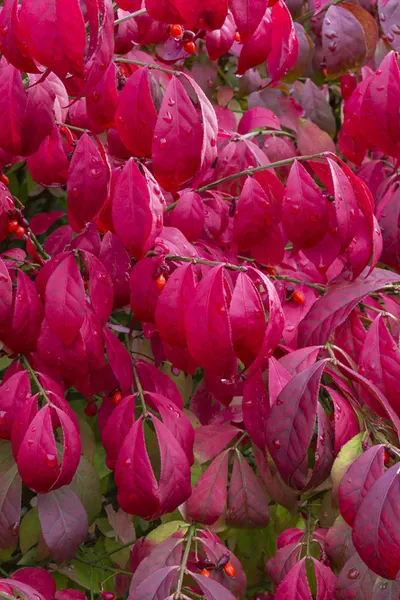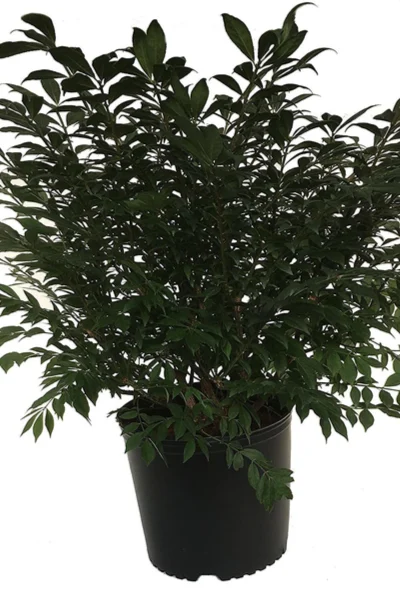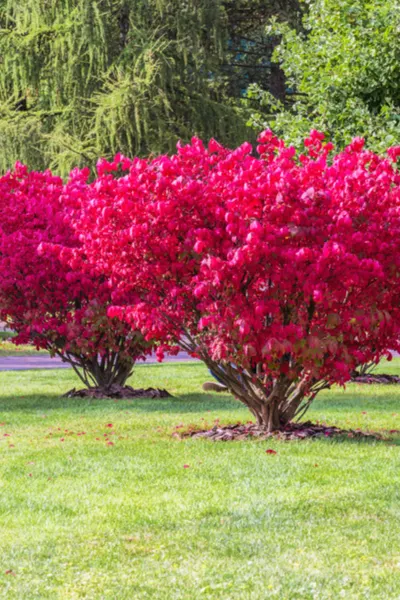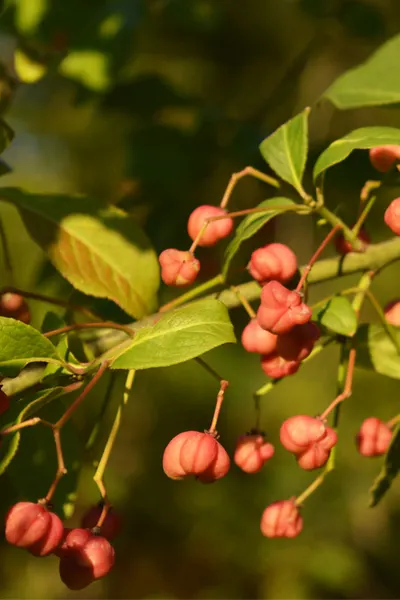Although growing burning bushes can add big spring, summer and fall color to your landscape, there are a few downsides to planting this shrub that blazes in autumn with bright red foliage.
Burning bushes are known for their fast growth and beautiful leaves. Especially as autumn rolls around, and their canopy of foliage turns to a fiery red.

But they can pose a few problems as well. And with that in mind, the pros and cons should be weighed before adding them into your plant mix. Here is a look at how to grow burning bushes, along with a few cautionary traits to consider before planting.
Growing Burning Bushes
Burning bushes (Euonymus alatus), certainly bring a lot of versatility to the landscape. For one, they are perfect for growing as a hedge plant for walkways and driveways. But they also make for a wondrous focal point as a stand alone shrub.
Even better, they tolerate nearly any soil condition. Although these hardy shrubs prefer full sun, they can adapt well to shadier areas of the landscape too.

Best of all, they also tolerate a wide spectrum of growing zones . In fact, Compactus, one of the more popular of all varieties, grows well from zones 4 through 8.
So with all of these positives, what could possibly be wrong with planting and growing burning bushes? Well, believe it or not – plenty!
The Downside Of Growing Euonymus Alatus
For all of its positive growing traits, burning bushes come with a few undesirable qualities. At the top of the list is the fact that many states and areas have listed it as an invasive species.
Since first arriving from Asia many years ago, the bush has spread rapidly. Its adaptability to nearly any soil condition has made it a hardy shrub with little to keep it in check.

And it also spreads easily in two unique ways. First, burning bushes can tunnel underground through long roots and new shoots. If left unchecked, it can create a bevy of new plants in just a few years.
But Euonymus alatus also spreads and replants easily thanks to the birds and wildlife that consume its fall berries. The berries are actually seeds, and when deposited elsewhere, can grow new plants quickly.
The Poisonous Side of Growing Burning Bushes
As if the invasive part wasn’t enough, Euonymus alatus can also be quite toxic when ingested. Both the leaves and berries of the shrub contain toxins harmful to humans and common household pets.
Although rarely fatal, it can cause a whole slew of digestive and circulatory issues when consumed. The good news: the shrub’s leaves and berries are only toxic when ingested, and not via skin contact with the foliage or fruits.

Interestingly enough, the berries are actually an important source of food for birds, squirrels and chipmunks – especially in the winter when food can be scarce.
To Grow Or Not To Grow Burning Bushes
So what is the verdict on Euonymus alatus? Are they safe for planting?
It first depends on where you live. As mentioned earlier, the plant is banned from growing in many states. It’s important to first check first with your extension office to see if it is safe to plant in your area.
If you are able to plant, certainly use caution if small children and pets will be able to come in contact with the shrub’s leaves and berries. You can also help the spread of growth from roots by removing any new shoots that appear.

For more information on trees and shrubs for your landscape, check out our Trees & Shrubs tab on the website.
This Is My Garden is a website dedicated to spreading the love and knowledge of gardening around the world. We publish two new garden articles each week. This article may contain affiliate links.
